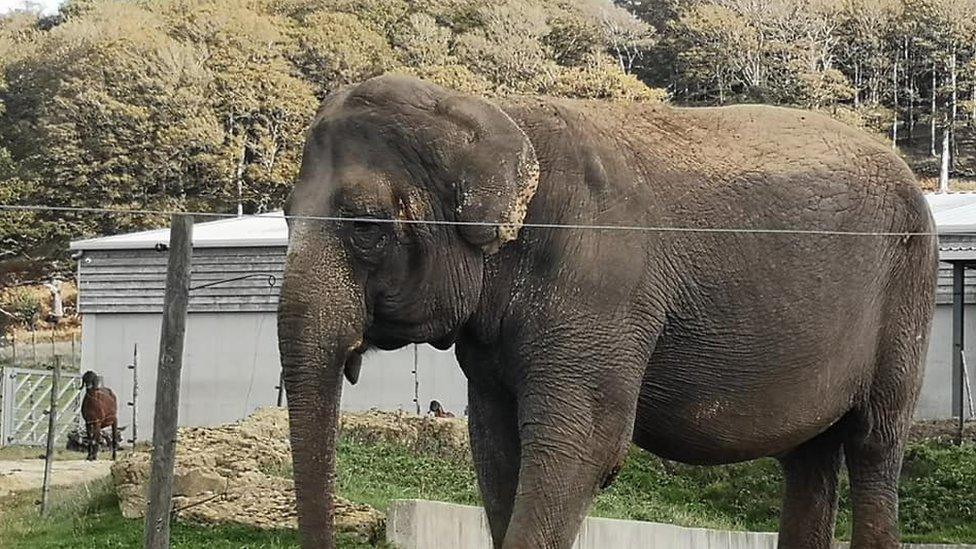Longleat Safari Park's history told in outdoor exhibition
- Published
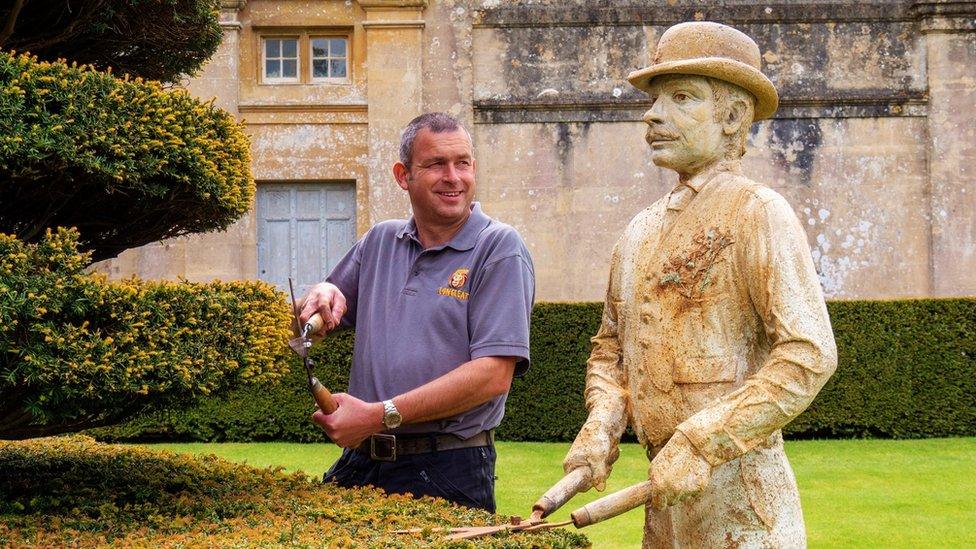
In 1902, William Taylor (pictured right) was Longleat's head gardener, a role that is now held by Jules Curtis (pictured left) who was appointed in 2020
Stories that follow five centuries of Longleat Estate's working history have been captured in an outdoor exhibition.
Tales of the Garden includes sculptures of workers and animals that were part of the Wiltshire estate's grounds and gardens.
The artworks were created using a range of materials and were inspired by images taken from Longleat's archives.
It has been home to the Marquesses of Bath since the 1600s and is believed to be the world's first safari park.
The exhibition has been spread across nine different installations dotted around Longleat's formal gardens and historic stable yard.
Landscape architects and garden designers who contributed to Longleat's appearance through the centuries, such as George London, 'Capability' Brown, Humphry Repton, Russell Page and Graham Burgess are depicted in the pieces.
These designers were guided by the visions of the Thynne family who lived on the estate.
Uk-based artists, Charlotte Austen, Rebecca McDonald, Penny Spedding and their teams used materials such as jesmonite, steel, wool, wood, wire, ink, fabric, pigment and gold leaf to make the scullptures.
The exhibition will run until 12 September.

Pheasants and peacocks roamed free in Longleat's secret garden in the 1960s
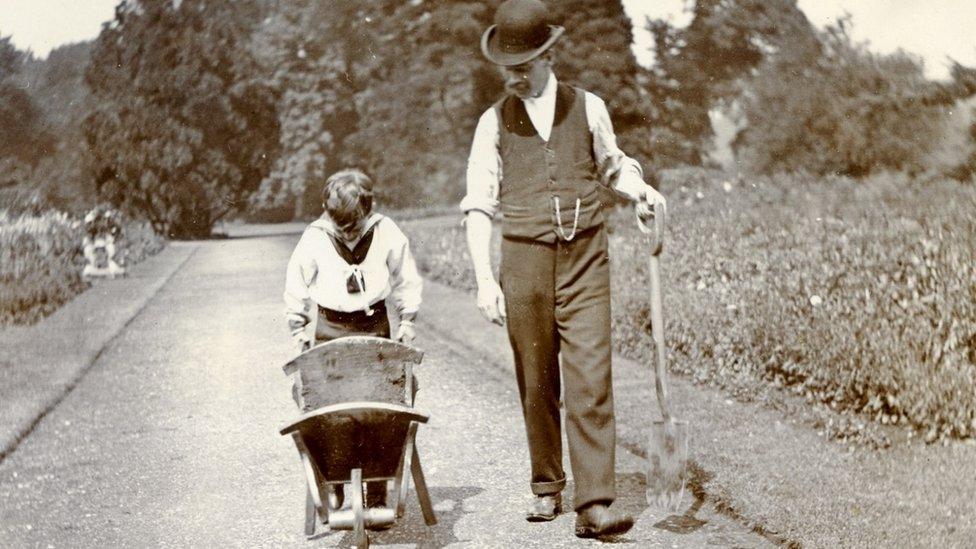
Head gardener William Taylor (pictured right) showed young master John Alexander Thynne the changes in the garden through the seasons c. 1902
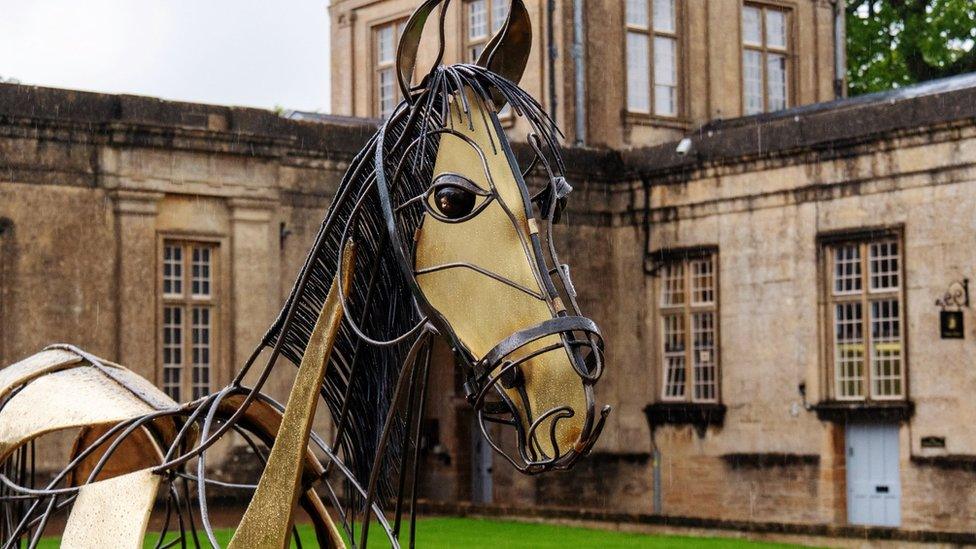
Horses have long been part of the estate's working history

Coachmen were a familiar sight on the estate in 1878
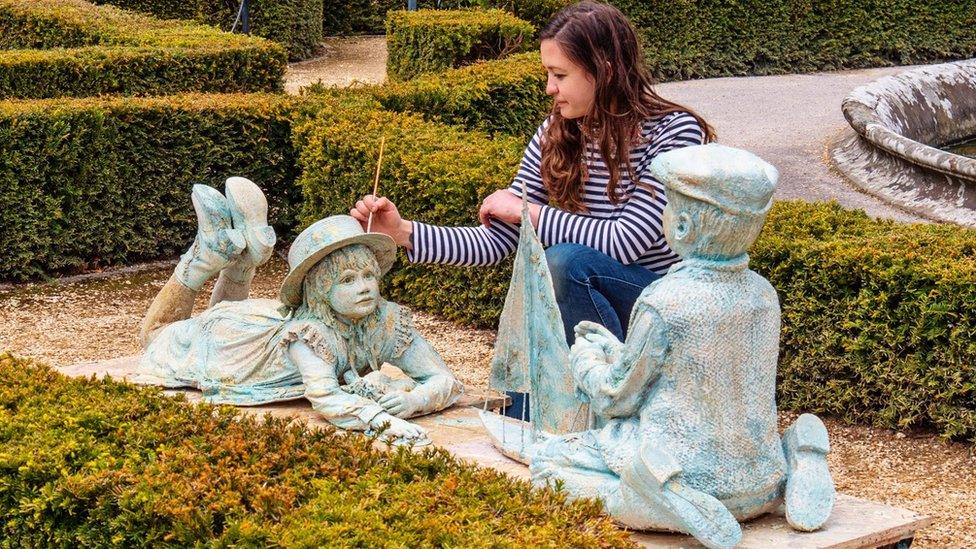
Artist Charlotte Austen made a sculpture based on a Thynne family photograph from 1926
Related topics
- Published10 May 2020
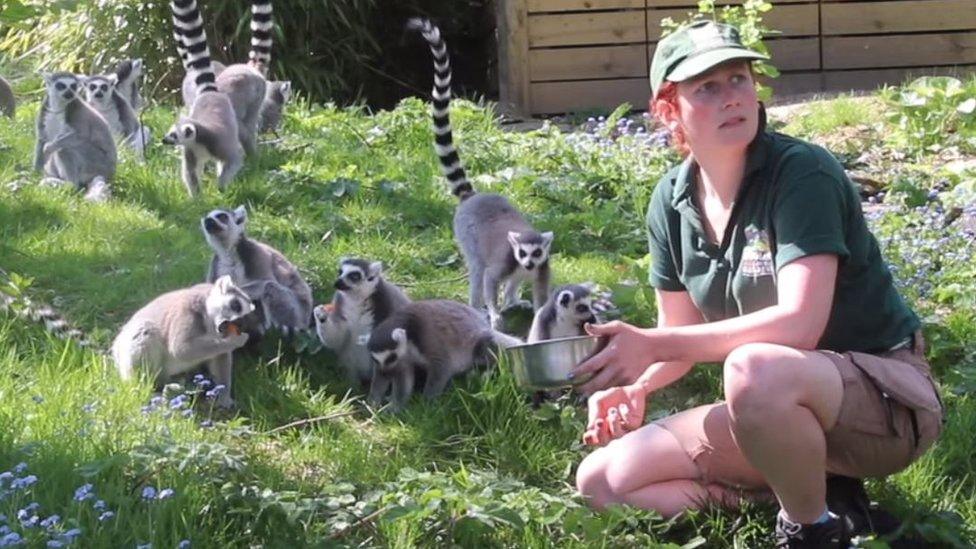
- Published14 April 2021

- Published5 April 2020
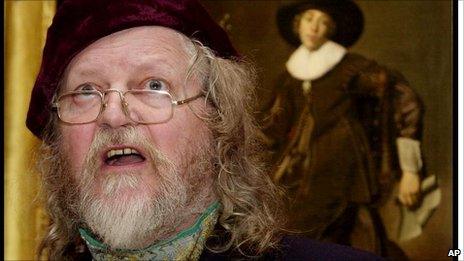
- Published13 March 2021
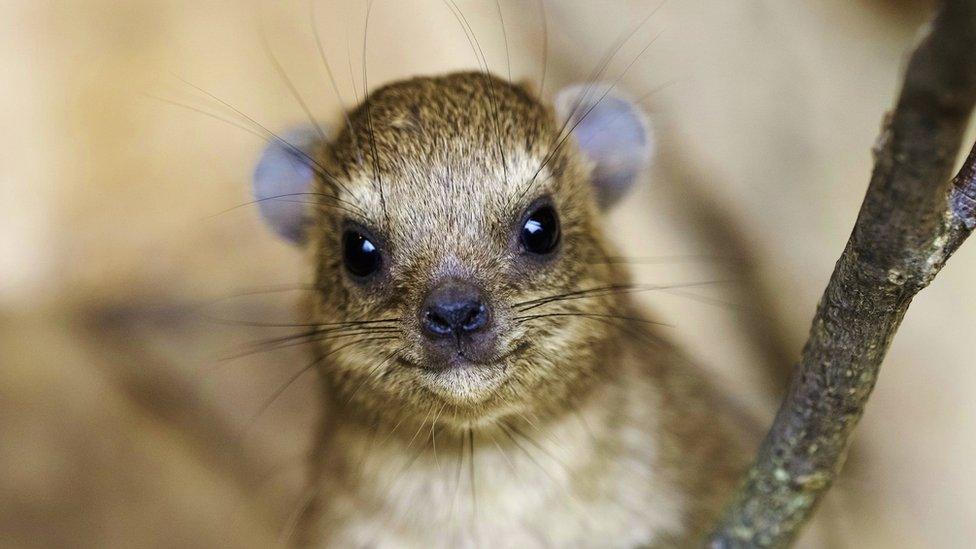
- Published21 February 2021
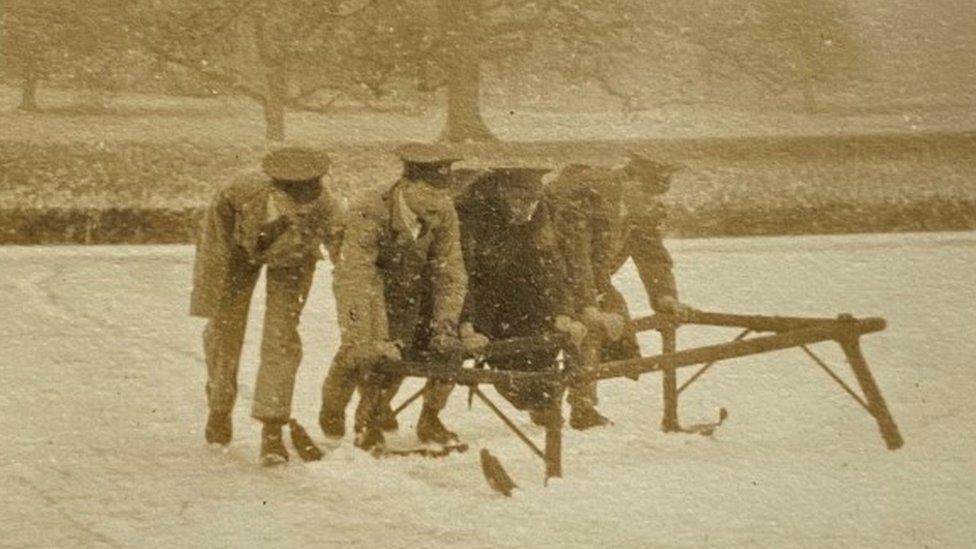
- Published16 February 2021
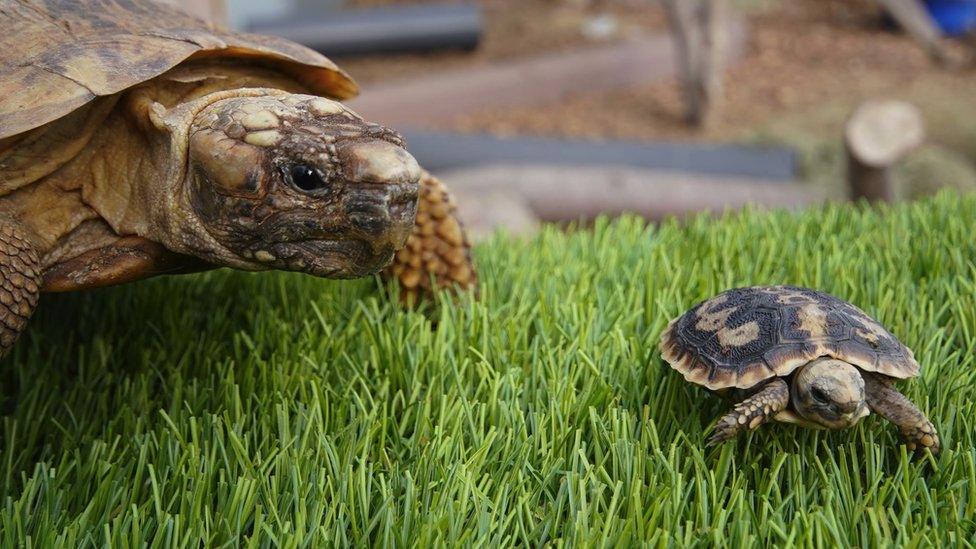
- Published8 January 2021
